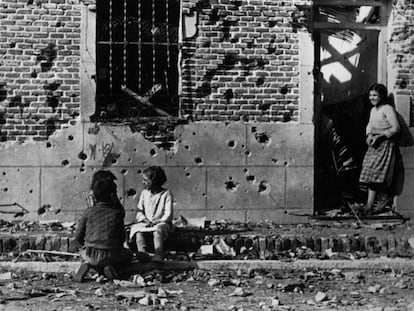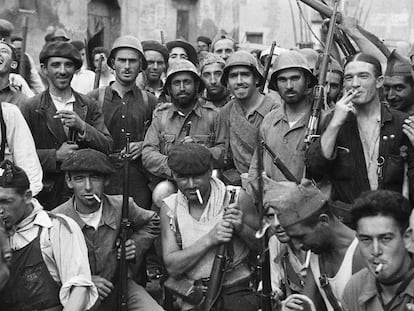Exploring Spain’s Civil War legacy in and around Madrid
A growing number of towns in the region seek to tap into budding interest in military-related tourism

One of the first battles in the Spanish Civil War took place in late July 1936 at the mountain pass of Somosierra, around 80 kilometers north of Madrid, when Republican forces managed to hold back rebel troops backing the military coup led by General Francisco Franco that were trying to take control of two reservoirs that supplied the capital with water. After days of bitter fighting, the Republican forces held the line, after which there was little action until the end of the conflict in April 1939.
Residents of the villages in the area, such as Puentes Viejas and Buitrago de Lozoya, still tell stories about how children would pass through the lines, and that soldiers from the two sides would swap tobacco and rolling paper, while on more than one occasion, impromptu soccer matches took place between the opposing forces.
How to conserve sites such as the Valley of the Fallen remains a highly sensitive issue
Now, many of the trenches and machine-gun nests, bunkers, and command posts built during the two-and-half year stand-off in the mountains north of Madrid have been repaired and guided tours arranged, starting at a visitors’ center in Puentes Viejas, some 60 kilometers north of the capital.
Spain’s Civil War, which was followed by a 40-year dictatorship, remains a sensitive subject, and most military infrastructure was simply abandoned, although a few bunkers still survive on the western edges of the capital.
But a small number of towns are now beginning to see their Civil War relics as a way to attract visitors. A recent survey highlights the need for more research into military tourism, and signals its potential. It includes some 12 sites linked to the conflict, and aims to “bring to life accounts of suffering and pain, as well as civic, moral, ethical and democratic values.”
One of the earliest such initiatives was launched in the tiny community of Piñúecar-Gandullas, in Somosierra, by Rosa Fajardo, who offers guided tours of the battle lines. The two-and-a-half hour visit can be arranged at the village bar, and costs €20, including lunch.
Towns in southeast Madrid want the regional government to help conserve their Civil War legacy
Meanwhile, the local council of the town of Guadarrama, some 46 kilometers northwest of Madrid, offers a series of Civil War routes on its website, which are signposted and include information panels explaining the daily life of the soldiers stationed there.
Pinto, a dormitory town some 25 kilometers south of the capital, is also seeking to put its Civil War heritage to good use: its website provides information about Los Yesares, a network of bunkers that formed part of the defense of the capital.
A number of associations have launched their own initiatives to protect the remaining infrastructure from the Jarama Front in the southeast of the capital, where some of the bloodiest fighting took place in the first year of the war. The town councils of Morata de Tajuña Arganda, Rivas, and San Martín de la Vega are calling on the regional government to provide funding for their projects, and in the meantime have created routes exploring the battle lines.
A 2,000-square-meter bunker in Madrid’s Capricho park in 1937 used as the headquarters of the Republican army was recently renovated and can be visited with prior booking. Blockhaus 13 is a bunker complex modeled on those built by the Germans during World War I in Colmenar del Arroyo, 60 kilometers west of Madrid.
English version by Nick Lyne.
Tu suscripción se está usando en otro dispositivo
¿Quieres añadir otro usuario a tu suscripción?
Si continúas leyendo en este dispositivo, no se podrá leer en el otro.
FlechaTu suscripción se está usando en otro dispositivo y solo puedes acceder a EL PAÍS desde un dispositivo a la vez.
Si quieres compartir tu cuenta, cambia tu suscripción a la modalidad Premium, así podrás añadir otro usuario. Cada uno accederá con su propia cuenta de email, lo que os permitirá personalizar vuestra experiencia en EL PAÍS.
¿Tienes una suscripción de empresa? Accede aquí para contratar más cuentas.
En el caso de no saber quién está usando tu cuenta, te recomendamos cambiar tu contraseña aquí.
Si decides continuar compartiendo tu cuenta, este mensaje se mostrará en tu dispositivo y en el de la otra persona que está usando tu cuenta de forma indefinida, afectando a tu experiencia de lectura. Puedes consultar aquí los términos y condiciones de la suscripción digital.











































